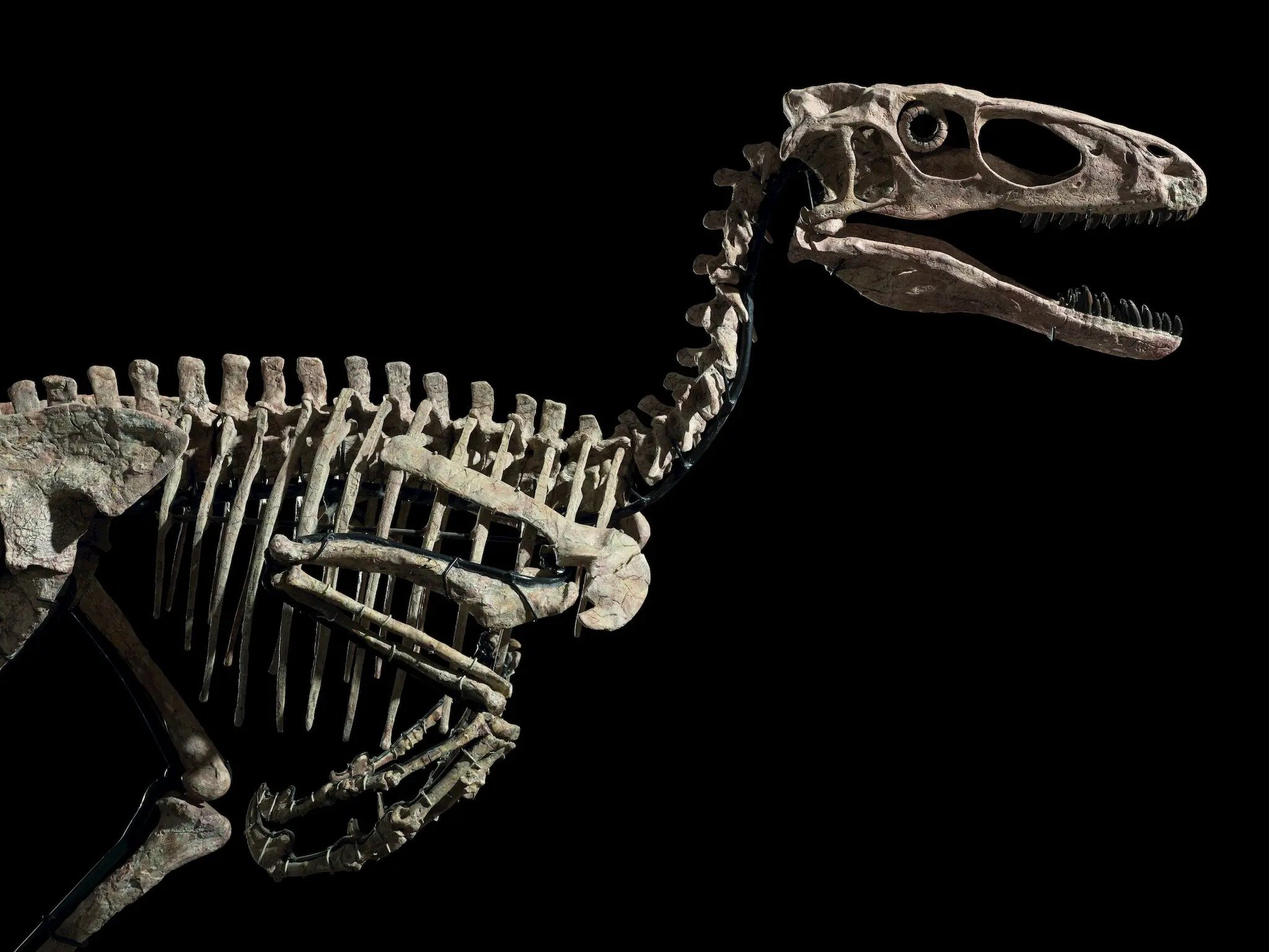
Christie's highly anticipated 20th-and 21st-century art auction on May 12, 2022, was a roaring success. Buyers from across the globe outbid each other to own the Impressionist and Modern paintings offered. However, the evening's highlight was a remarkably well-preserved fossil of a Deinonychus antirrhopus. The rare skeleton — the first of its kind ever sold at an auction — fetched an impressive $12.4 million (with fees) from an anonymous fan. It was more than double the auction house's estimated high of $6 million.
The 10-foot-long and 4-foot-tall skeleton, nicknamed "Hector," dates back 108 to 115 million years. It was unearthed between 2012 and 2014 from private land in Montana's Wolf Canyon by amateur paleontologists Jack and Roberta Owen. The specimen comprises 126 fossilized bones— the most ever found for the Deinonychus species. However, some parts, including the skull, are manufactured. Except for a brief appearance at the Natural History Museum of Denmark in Copenhagen from 2020 to 2021, the dinosaur fossil has remained in the hands of private buyers.

The Deinonychus belonged to the clade of dinosaurs called theropods — a diverse group of bipedal carnivores that include the fearsome T. Rex. The apex predators flourished in western North America during the Early Cretaceous period and were the most feared animals of their time.
Their name, which translates to "terrible claw," refers to the curved, hook-like claws on each foot. Christie's description states, "It is believed that in order to use the claw with the highest degree of success, Deinonychus would have stood on one leg, holding the target with its long arms, and impaled its prey with a powerful kick."
The Velociraptors in the "Jurassic Park" book and movie series were modeled after the Deinonychus. The dinosaurs are closely related, but Velociraptors were much smaller and only found in Mongolia and parts of northern China. Michael Crichton, who penned the series, later confessed that he chose the name Velociraptors because it had a more dramatic ring.
Resources: news.artnet.com, Christie's.com
